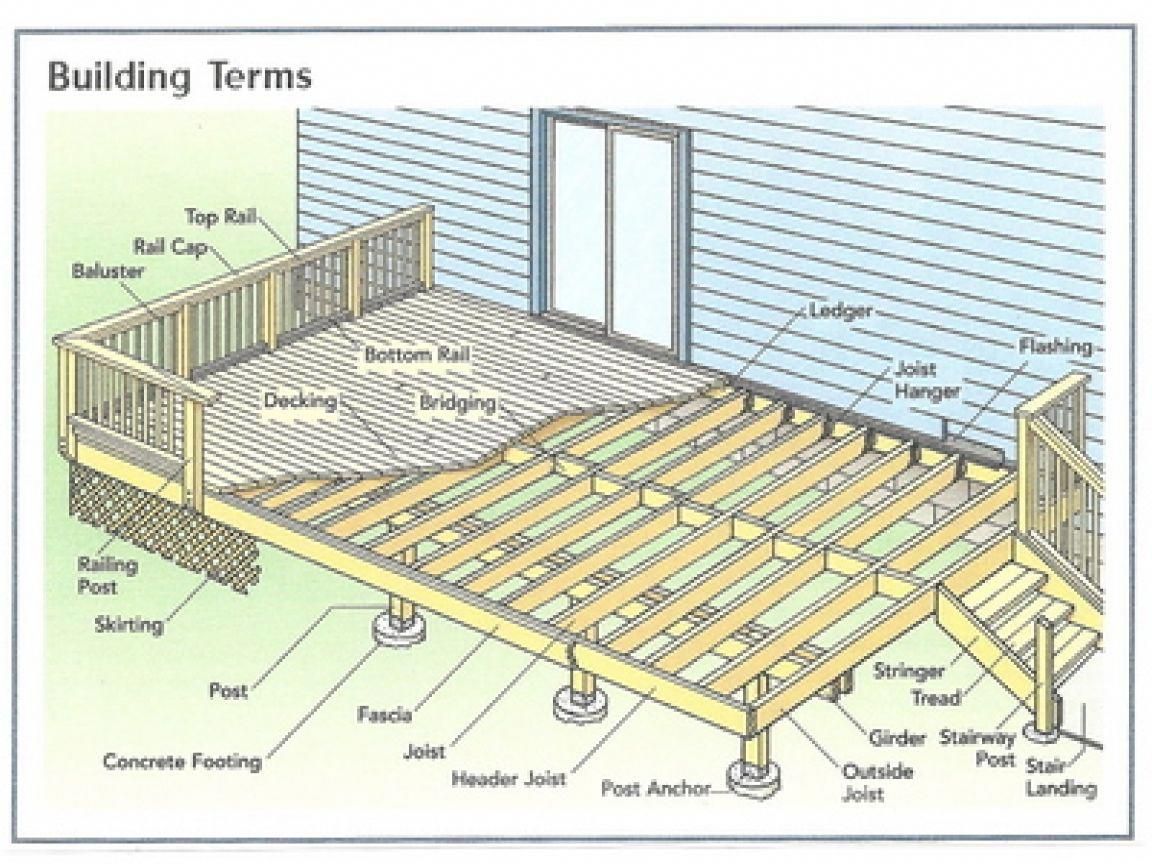Ready to transform your backyard into the outdoor oasis you’ve always envisioned? This comprehensive guide will equip you with everything you need to know about planning, designing, building, and budgeting for your dream 16×20 deck. Whether you’re a seasoned DIYer or just starting out, we’ll break down the process step-by-step, covering everything from choosing the right materials to ensuring you’re following all the necessary regulations. Let’s get started!
Designing Your Dream Deck
Dreaming of a spacious outdoor haven? A 16×20 deck could be the perfect addition to your home! But before you grab your tools, let’s delve into the creative process.
Finding the Perfect Plan
Numerous online resources offer a wealth of customizable 16×20 deck plans. Sites like Decks.com can be a great starting point, offering designs like Plan 1LA2016 that can be adapted to your specific needs. Don’t limit yourself to a single source, though. Explore options on Family Handyman, Pinterest, and other platforms to find the perfect blueprint for your vision. Whether you prefer a single-level or multi-level design, incorporating a pergola or keeping it simple, the key is to find a plan that sparks your imagination and meets your practical requirements.
Adding a Personal Touch
Once you’ve found a plan that resonates with you, it’s time to personalize it. Websites like The Spruce and Pinterest can be valuable sources of inspiration. Consider how you intend to use your deck. Will it be a tranquil retreat for reading, a lively entertainment hub, or a blend of both? Reflect on these factors to inform your design choices, focusing on essential elements:
- Layout: Strategically plan the placement of stairs, seating areas, and features like a built-in grill.
- Materials: Choosing the right decking material is crucial. Pressure-treated lumber, such as YellaWood, offers affordability and a classic aesthetic. Composite decking, like Trex, prioritizes low maintenance and durability. Sustainable options like bamboo or reclaimed wood are also gaining popularity. Ongoing research suggests that even more eco-friendly decking materials may emerge in the future.
- Features: Enhance your deck with features like a pergola for shade, built-in benches for seating, or planters for a touch of greenery.
Building Your 16×20 Deck: A Step-by-Step Guide
Now that you have a design in mind, let’s explore the construction process.
Preparation and Foundation
Begin by obtaining the necessary permits from your local authorities to ensure compliance with building codes. Then, clear the designated area and carefully mark the deck’s perimeter. A robust foundation is essential for stability and longevity. Consult local building codes for specific requirements regarding footings, posts, and concrete. Soil type can also influence the foundation design. Some experts believe deeper footings are necessary in regions with expansive clay soil. You may want to consult the comprehensive 2×6 span chart to ensure your structural integrity.
Framing and Decking
With your foundation in place, construct the frame using your chosen 16×20 deck plan as a guide. This involves creating a perimeter frame, adding support beams and joists, and ensuring precise measurements and alignment for structural integrity. Next, install the decking boards, maintaining uniform spacing for a professional finish. Refer to the manufacturer’s instructions, as installation requirements can vary depending on the decking material.
Finishing Touches
The final step involves adding railings for safety, stairs for accessibility, lighting for ambiance, and any other desired features. This is your chance to personalize your deck and make it truly your own. Resources like Family Handyman and Lowe’s offer helpful DIY guides and videos for assistance throughout the building process.
Choosing the Right Decking Materials
Your choice of decking material significantly influences your deck’s aesthetics, durability, and maintenance needs. Explore the pros, cons, and estimated costs of various options:
| Material | Pros | Cons | Approximate Cost (per sq ft) |
|---|---|---|---|
| Pressure-Treated Wood | Affordable, classic look, readily available | Requires regular maintenance, susceptible to rot and warping | $3 – $8 |
| Composite Decking | Low maintenance, durable, varied styles | More expensive than pressure-treated wood, can fade or scratch over time | $10 – $30 |
| Other Options (e.g., Bamboo, Reclaimed Wood) | Often sustainable, unique aesthetic | Can be less readily available, specialized installation might be necessary, may require specific maintenance | Varies significantly |
Remember that costs can vary depending on your location and the specific product. Always consult local suppliers for the most up-to-date pricing.
Budgeting for Your Deck Project
Before breaking ground, create a realistic budget. Online cost calculators, such as the one provided by Trex, can help estimate material and labor expenses. Include the following in your calculations:
- Materials: Lumber, fasteners, railings, decking, etc.
- Tools: Factor in the cost of renting or purchasing necessary tools. You might also want to know the precise cubic yardage of a 1 80 lb bag of concrete how many yards to accurately estimate your concrete needs.
- Labor: Include labor costs if you plan to hire professionals.
- Permits: Permit fees vary by location.
- Contingency: Include a buffer for unforeseen expenses.
2024 Deck Cost Calculator: How Much Will a 16×20 Deck Really Cost?
Building a 16×20 deck, offering 320 square feet of outdoor living space, is a significant investment. Understanding the associated costs is crucial for effective planning. While a general estimate ranges from $9,600 to $19,200, the actual cost can vary widely based on numerous factors.
Decking Materials and Costs
Material choice significantly influences the overall expenses. Here’s a cost breakdown for different decking options:
- Pressure-Treated Lumber: The most budget-friendly option, typically costing $2 to $5 per square foot. While affordable and readily available, it requires regular maintenance to prevent rot and warping.
- Composite Decking: Known for its durability and low maintenance, composite decking ranges from $10 to $25 per square foot, sometimes exceeding this depending on the brand and features.
- Exotic Hardwoods: Offering luxurious aesthetics and exceptional longevity, exotic hardwoods like Ipe, mahogany, and teak can cost $20 to $45 or more per square foot.
| Material | Cost per sq. ft. | Pros | Cons |
|---|---|---|---|
| Pressure-Treated | $2 – $5 | Affordable, readily available | Requires regular maintenance, can warp or splinter |
| Composite | $10 – $25 | Durable, low-maintenance, resists fading and insects | More expensive, can get hot in direct sunlight |
| Exotic Hardwood | $20 – $45+ | Beautiful, long-lasting, naturally resistant | Very expensive, can be difficult to work with, potentially limited availability |
Unmasking the Hidden Costs
Beyond material expenses, several “hidden” costs can significantly impact your budget:
- Permits: Permit fees vary by location and project complexity.
- Site Preparation: Costs associated with excavation, leveling, and landscaping removal.
- Demolition: Expenses related to tearing down and removing an existing deck.
- Labor: Labor costs can be substantial, particularly if you hire a contractor.
- Railings: Railing costs depend on material and style.
Saving Money on Your Deck Project
Building a deck doesn’t have to drain your bank account. Employ these strategies for cost savings:
- DIY When Possible: Handle tasks like painting or staining to reduce labor costs.
- Simplify Your Design: Opt for a simpler design initially, adding upgrades later.
- Choose Budget-Friendly Materials: Consider pressure-treated lumber or explore reclaimed wood options.
- Shop Around: Compare prices from different suppliers to find the best deals.
- Plan Carefully: Detailed planning helps avoid costly mistakes and unnecessary purchases.
Key Takeaways:
- A 16×20 deck typically costs between $9,600 and $19,200, but prices can range significantly.
- Material choice is the primary cost driver.
- Consider “hidden” costs when budgeting.
- Careful planning and DIY efforts can help control expenses.
Is a 16×20 Deck Right for You? Size, Cost, and Design Considerations
A 16×20 deck, providing 320 square feet of outdoor space, is undoubtedly a substantial addition. But is it the right size for your home and lifestyle? Let’s explore the key considerations.
Proportion and Yard Space
It’s generally recommended that a deck’s size should not exceed 20% of your home’s square footage. This maintains visual balance and prevents the deck from overwhelming your house. A 16×20 deck is likely suitable for homes 1600 square feet or larger. Equally important is assessing your yard space. Ensure you have ample room for the deck, landscaping, walkways, and other outdoor elements. Consider sunlight and shade patterns when positioning different areas on your deck, such as dining, lounging, or sunbathing zones.
Designing Your Outdoor Oasis
A 16×20 deck provides ample space to create dedicated areas for various activities. Imagine a designated dining space, a cozy lounge area, and perhaps a grilling station. Careful planning is essential to optimize flow and functionality. Consider how people will enter, exit, and move between different areas to avoid bottlenecks and create an inviting space. As you plan your layout, think about:
- Zoning: Visualize how you’ll use the space, allocating space for different activities.
- Flow: Ensure smooth traffic patterns and avoid awkward detours.
- Furniture: Measure your outdoor furniture to guarantee sufficient space without overcrowding.
- Regulations: Consult local building codes for any size, height, or material restrictions.
Choosing the Right Materials
The materials you choose will influence your deck’s durability, aesthetics, and required maintenance.
| Material | Pros | Cons |
|---|---|---|
| Pressure-Treated | Affordable, widely available | Requires regular maintenance |
| Composite | Durable, low-maintenance, various colors | More expensive than pressure-treated |
| Bamboo | Sustainable, aesthetically pleasing | Can be susceptible to scratches |
| Reclaimed Wood | Unique character, eco-friendly | Can be costly, requires careful sourcing |
Budgeting and Building
Building a 16×20 deck requires a realistic budget. Factor in material costs, permits, fasteners, and additional features like railings, lighting, or built-in seating. Compare estimates from multiple suppliers and contractors. If you’re experienced in carpentry, you might tackle the project yourself. However, for complex designs or if you lack the time or skills, hiring a qualified contractor is recommended. They can manage all aspects of the project, from permitting to ensuring code compliance.
Key Takeaways:
- A 16×20 deck provides 320 square feet of outdoor space.
- It’s generally appropriate for homes 1600 square feet or larger.
- Careful planning maximizes functionality and aesthetics.
- Material choices significantly impact cost and maintenance.
- Establish a realistic budget and consider potential additional expenses.
- Assess your DIY skills and available time when deciding whether to hire a professional.
Calculating Deck Joists for a 16-Foot Deck: A Comprehensive Guide
Joists form the backbone of your deck, providing essential support. Calculating the correct number of joists is crucial for stability and safety. Let’s navigate this critical step.
Joist Spacing and Sizing
Joist spacing, the distance between joist centers, significantly influences deck strength. Common spacing options are 12 inches or 16 inches on-center. Closer spacing distributes weight more effectively, enhancing stability. Wider spacing requires larger joists (e.g., 2x10s instead of 2x8s) to handle the increased load. Joist size is determined by factors like span (the distance between supports) and load-bearing requirements.
Calculating Your Joist Needs
Use this straightforward formula to determine the number of joists:
(Deck Length in Inches) / (Joist Spacing in Inches) + 1 = Number of Joists
For a 16-foot (192-inch) deck with 16-inch on-center spacing:
192 / 16 + 1 = 13 joists
The “+1” accounts for the joists at each end of the frame.
| Deck Length (ft) | Joist Spacing (in) | Joist Size (Example) | Approximate Number of Joists |
|---|---|---|---|
| 16 | 12 | 2×8 | 17 |
| 16 | 16 | 2×8 | 13 |
Remember, this table provides estimates. Consult local building codes and lumber span tables for your specific situation.
Building Codes and Deck Board Direction
Local building codes dictate minimum requirements for joist size, spacing, and overall deck strength. Always consult your local building department to ensure compliance. Diagonal decking necessitates closer joist spacing to support the increased load between joists.
Key Takeaways:
- Accurate joist calculations are essential for a safe and structurally sound deck.
- Spacing and size are interconnected.
- Local building codes are paramount.
- Diagonal decking requires closer joist spacing.
- Use the provided formula for calculations.
Building a deck is a rewarding project. By following this guide, you can create the stunning outdoor space you’ve always dreamt of. Be sure to prioritize safety and compliance with local regulations. With careful planning and execution, you’ll enjoy your new deck for years to come!










